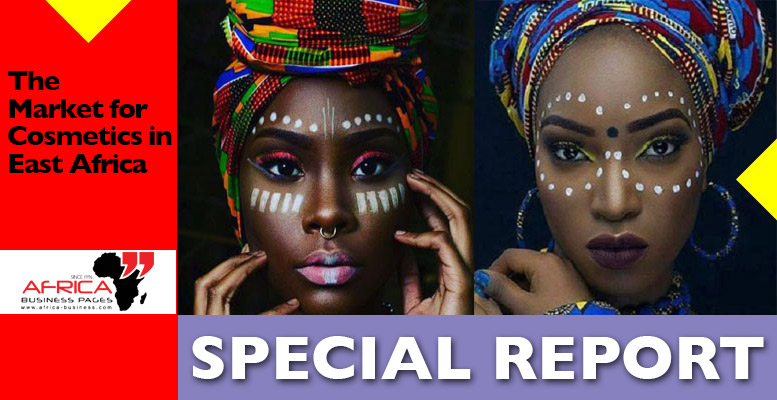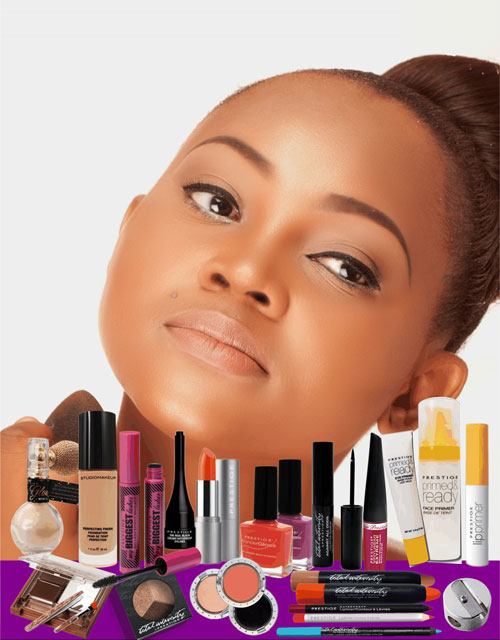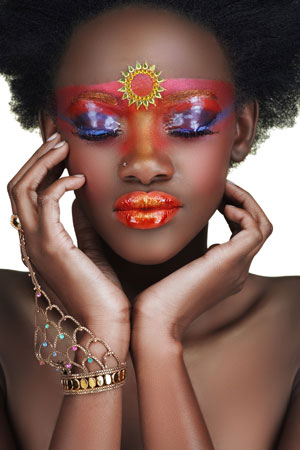Rising Demand For Cosmetics In Africa
Cosmetic companies building their beauty and personal care product lines to meet growing demand in East African markets

A study conducted by Africa Business Pages across five countries in the East Africa region (Kenya, Uganda, Tanzania, Ethiopia and Mozambique) revealed that consumers in East Africa are increasingly demanding products that are tailor-made to suit their needs and requirements.
A case in point is the booming hair care sector which, with combined sales of over $300 across the five
countries, is clearly the leading cosmetic product sold across East African markets. “The trend among
women in East Africa is not to use too many commercial products on their hair,” says Suzie Wokabi,
founder of SuzieBeauty Ltd. which is a renowned and the first  Kenyan cosmetics brand. “As very strong, harsh chemicals are used to
straighten the hair, they prefer hair care products that are more natural, less harsh and offer
smoothing benefits,” she says.
Kenyan cosmetics brand. “As very strong, harsh chemicals are used to
straighten the hair, they prefer hair care products that are more natural, less harsh and offer
smoothing benefits,” she says.
Obviously, there is a dearth of such Afrocentric hair care and skin care products in Africa and videos have appeared on YouTube of women using local natural ingredients to make their own hair care and skin care mixes.
Among the major international players, L’Oréal has been relatively successful in breaking into the East Africa market by introducing mass products and affordable brands like Garnier and L’Oréal Paris.
L’Oréal was quick to recognise the need for Afrocentric hair care and body care products specifically dedicated to meet the specific needs of the African consumers. After a detailed study and in-depth market research L’Oréal launched the famous SoftSheen-Carson brand, the first worldwide brand targeted towards African consumers. This was followed by Mizani – another mass market product which became an instant hit with hairdressing salons across East Africa.
 However, L’Oréal tasted real taste of success in the East African markets with its Dark
& Lovely brand. The takeover by L’Oreal of Interconsumer Products Ltd. has further helped boost the
popularity of the product and helped L’Oréal establish itself as a leader in the Afro-specific market
across Africa. L’Oréal operation in East Africa includes education for salons and hairdressers, and the
development of improved retailing for beauty products. The Middle East and Africa segment is the fastest
growing geographical segment for L’Oreal (approximately 15% year on year).
However, L’Oréal tasted real taste of success in the East African markets with its Dark
& Lovely brand. The takeover by L’Oreal of Interconsumer Products Ltd. has further helped boost the
popularity of the product and helped L’Oréal establish itself as a leader in the Afro-specific market
across Africa. L’Oréal operation in East Africa includes education for salons and hairdressers, and the
development of improved retailing for beauty products. The Middle East and Africa segment is the fastest
growing geographical segment for L’Oreal (approximately 15% year on year).
Dubbed as the next consumer hot spot, sub-Saharan Africa is experiencing the second-fastest economic growth in the world, only to be one step behind Asia-Pacific. As a result, the African economy is home to around 821 million consumers rushing to buy a wide range of cosmetics and beauty products. In fact, by 2025 sub-Saharan Africa is expected to have an economy that is worth around $2.5-trillion, the same value as that of the Russian economy today.
East Africa alone is home to over 350 million people, where
consumer spending is expected to grow to $170 billion in 2025. Sub-Saharan Africa could be the next big
growth region due to its high birth  rates and a rising middle class. The market leaders – South Africa and
Nigeria – will be followed by five key frontier markets: Kenya, Ethiopia, Tanzania, Ghana and Cameroon.
rates and a rising middle class. The market leaders – South Africa and
Nigeria – will be followed by five key frontier markets: Kenya, Ethiopia, Tanzania, Ghana and Cameroon.
Why Africa?
Africa is home to more than one billion people, which, compounded with high population growth and a shifting demographic profile (positively correlated with a rise in disposable income), presents vast potential for the consumer market. The African region as a whole is forecast to be home to close to three billion people by 2065 (from one billion currently) – more than the projected combined populations of China and India at that time. Thus, looking solely at the size of the consumer market, the potential of the African market is immense.
By 2030, Africa’s top 18 cities could have a combined spending power of $1.3trillion, making the continent a target for companies seeking growth outside developed countries.
Previous Next


